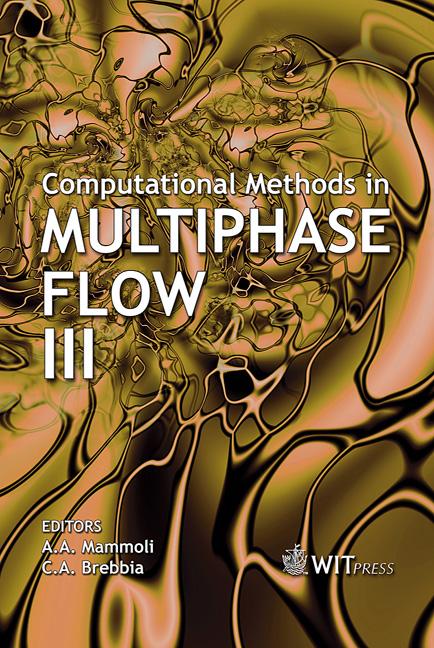Effects Of Droplet Preferential Segregation In Turbulent Flows On The Mixture Fraction Topology
Price
Free (open access)
Transaction
Volume
50
Pages
10
Published
2005
Size
950 kb
Paper DOI
10.2495/MPF050161
Copyright
WIT Press
Author(s)
J. R´eveillon & F. X. Demoulin
Abstract
The objective of this paper is to determine the simultaneous effects of the turbulence on the dispersion of an evaporating spray and the mixture fraction evolution. Three-dimensional simulations are carried out following two stages leading to various physical analysis. First, the mixing between the initially randomly dispersed phase is considered with non-evaporating particles. Following their Stokes number and the turbulence properties, the formation of clusters of particles is analyzed (formation delay, cluster characteristic size). Once the particles are in dynamical equilibrium with the surrounding turbulent flow, evaporation phenomena are considered through the analysis of the mixture fraction evolution. 1 Introduction In industrial systems dedicated to transport or energy transformation, a combustion chamber is generally fuelled by a spray of evaporating liquid droplets. The modeling of such chambers, involving the combustion of a two-phase flow or of a gaseous mixture issued from evaporation of a spray, is of primary importance to improve, the output of the considered device and to predict pollutant formation while maintaining a reasonable development cost. One of the input parameter of any non-premixed turbulent combustion model is the mixture fraction variable Z, which describes locally the mixing between the evaporated fuel and the gaseous oxidizer. The objective of this paper is to determine the simultaneous effects of the turbulence on the spray dispersion and the mixture fraction evolution. Thus, main characteristics of the mixture fraction field (fluctuation intensity levels and characteristic length scales) can be estimated directly from local properties of turbulence (rms, length scales) and spray parameters (Stokes number, liquid equivalence ratio).
Keywords





